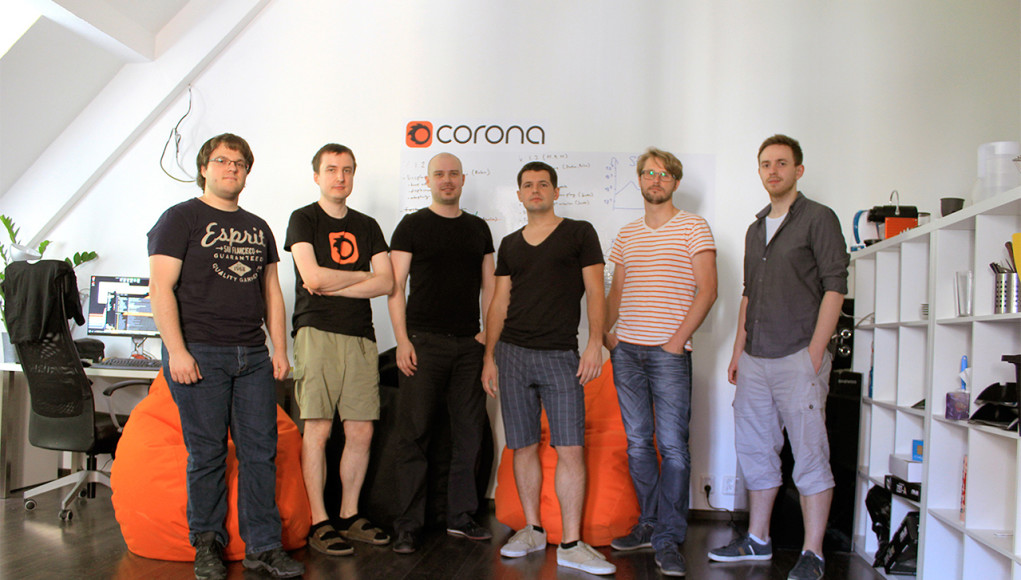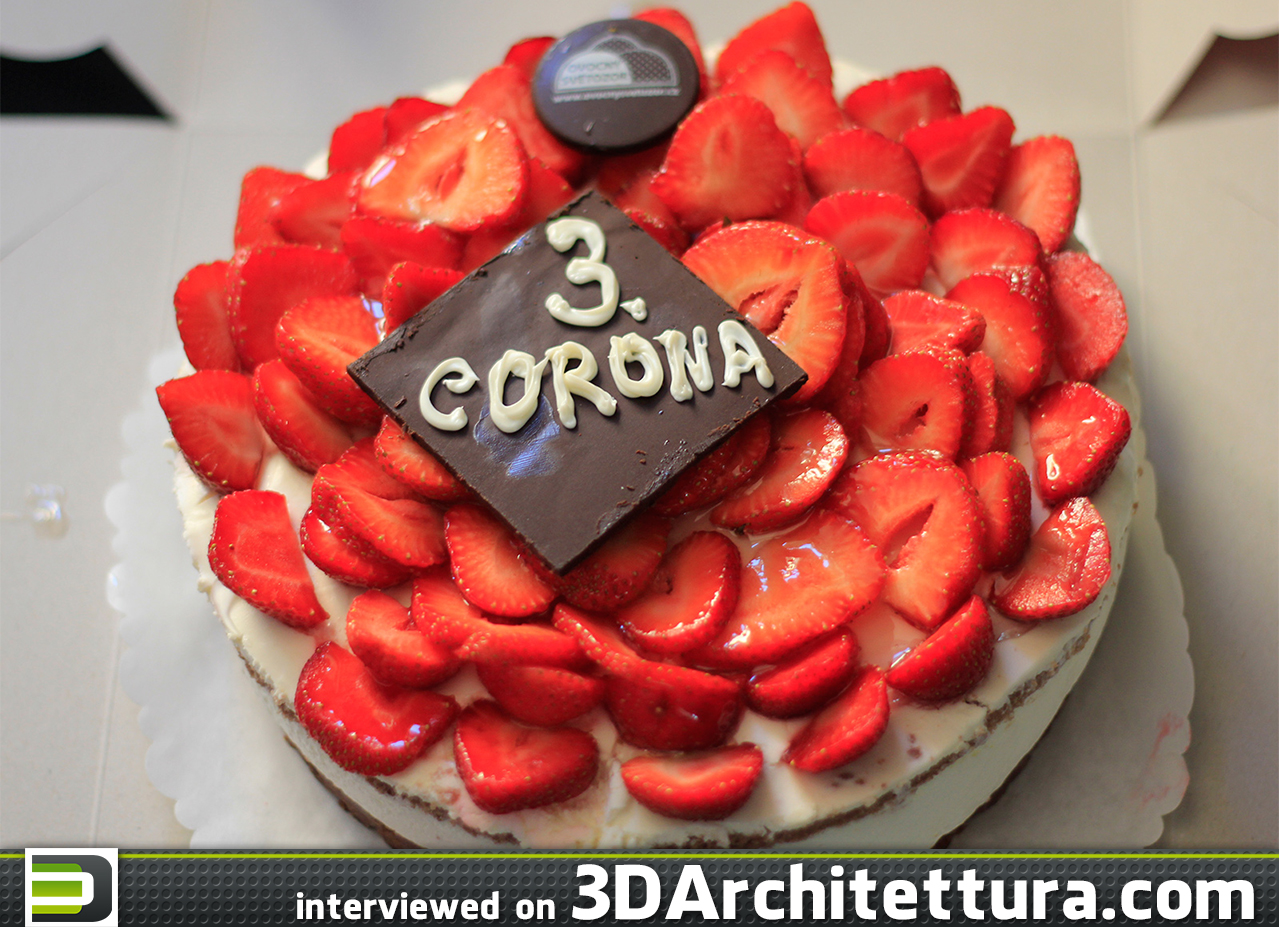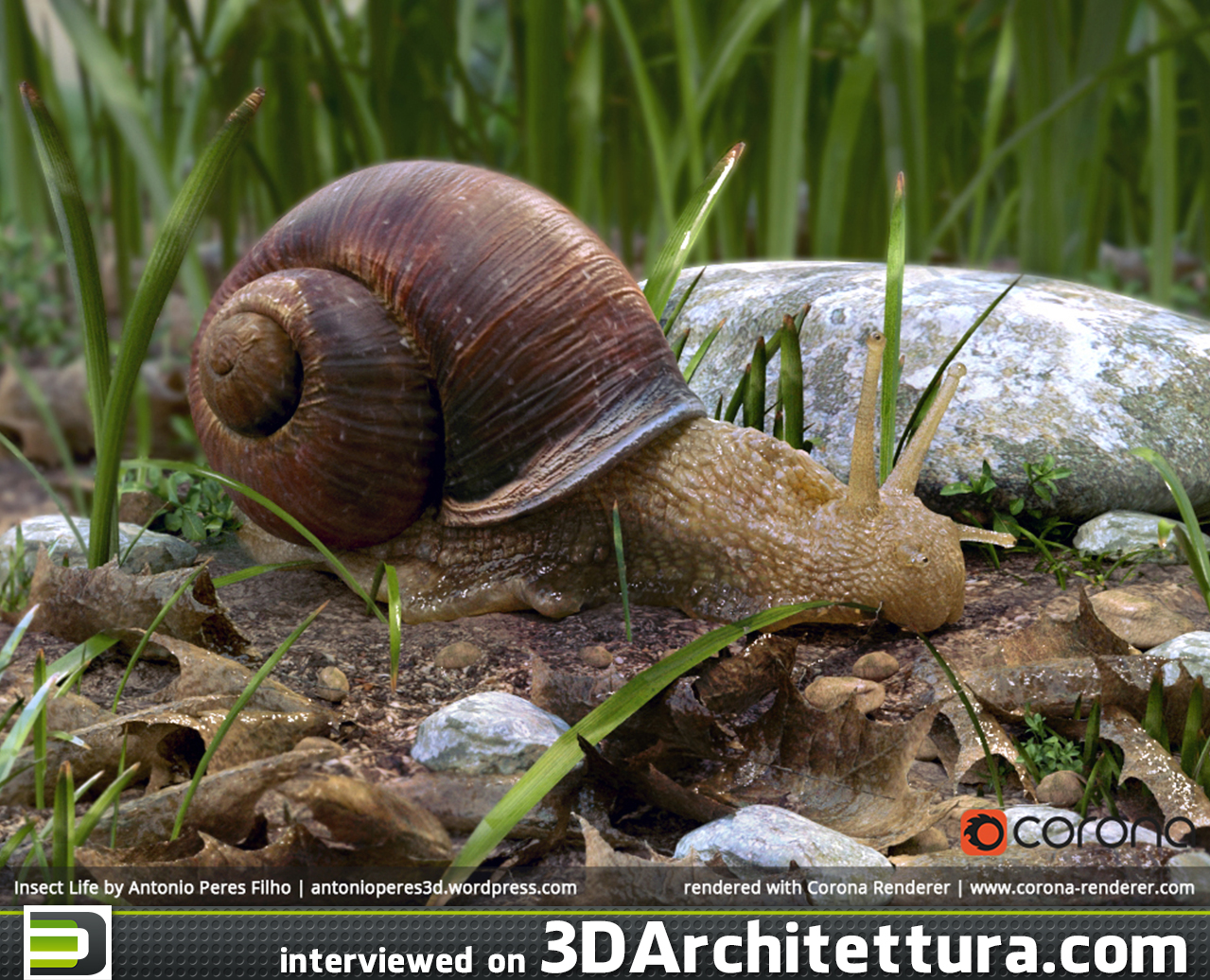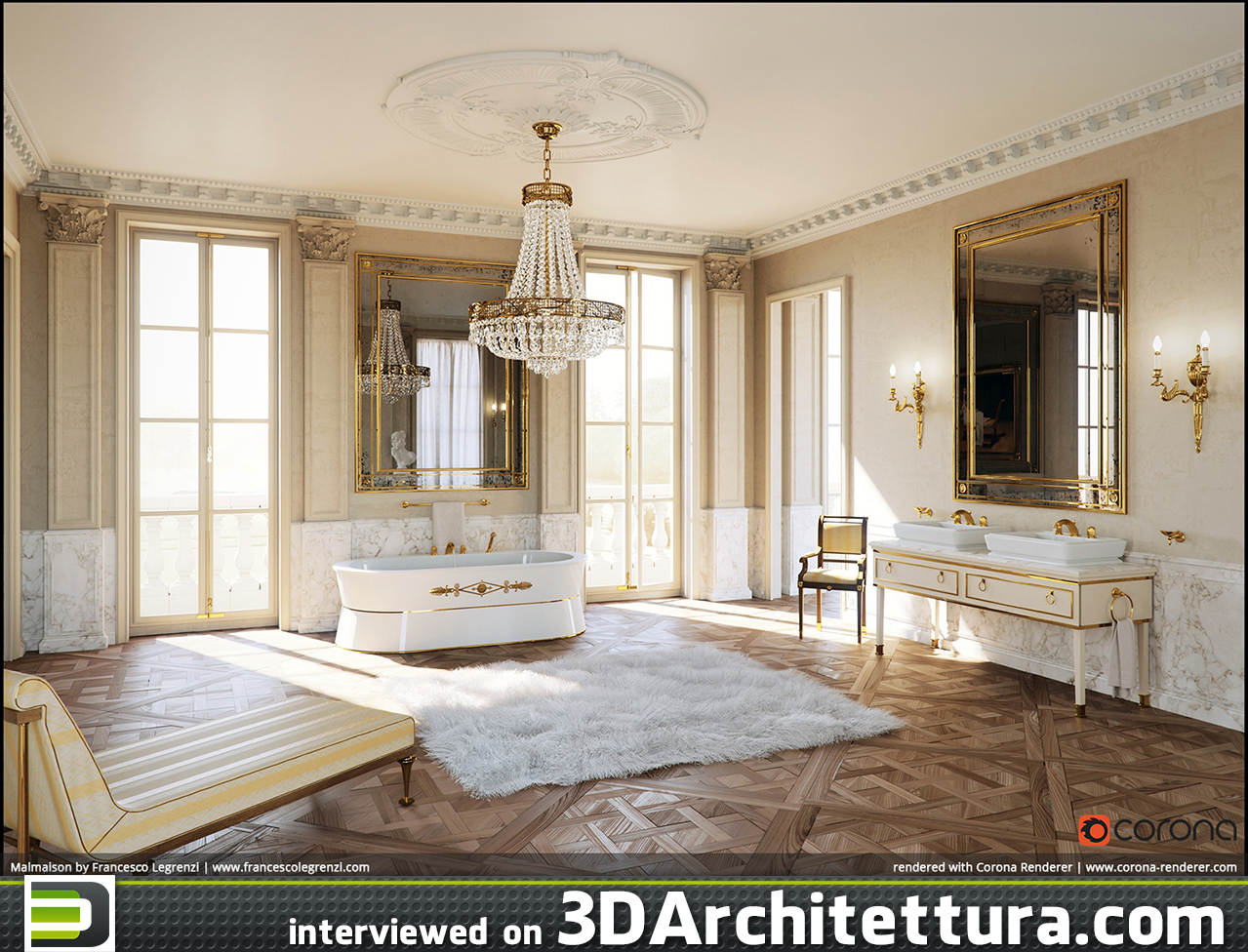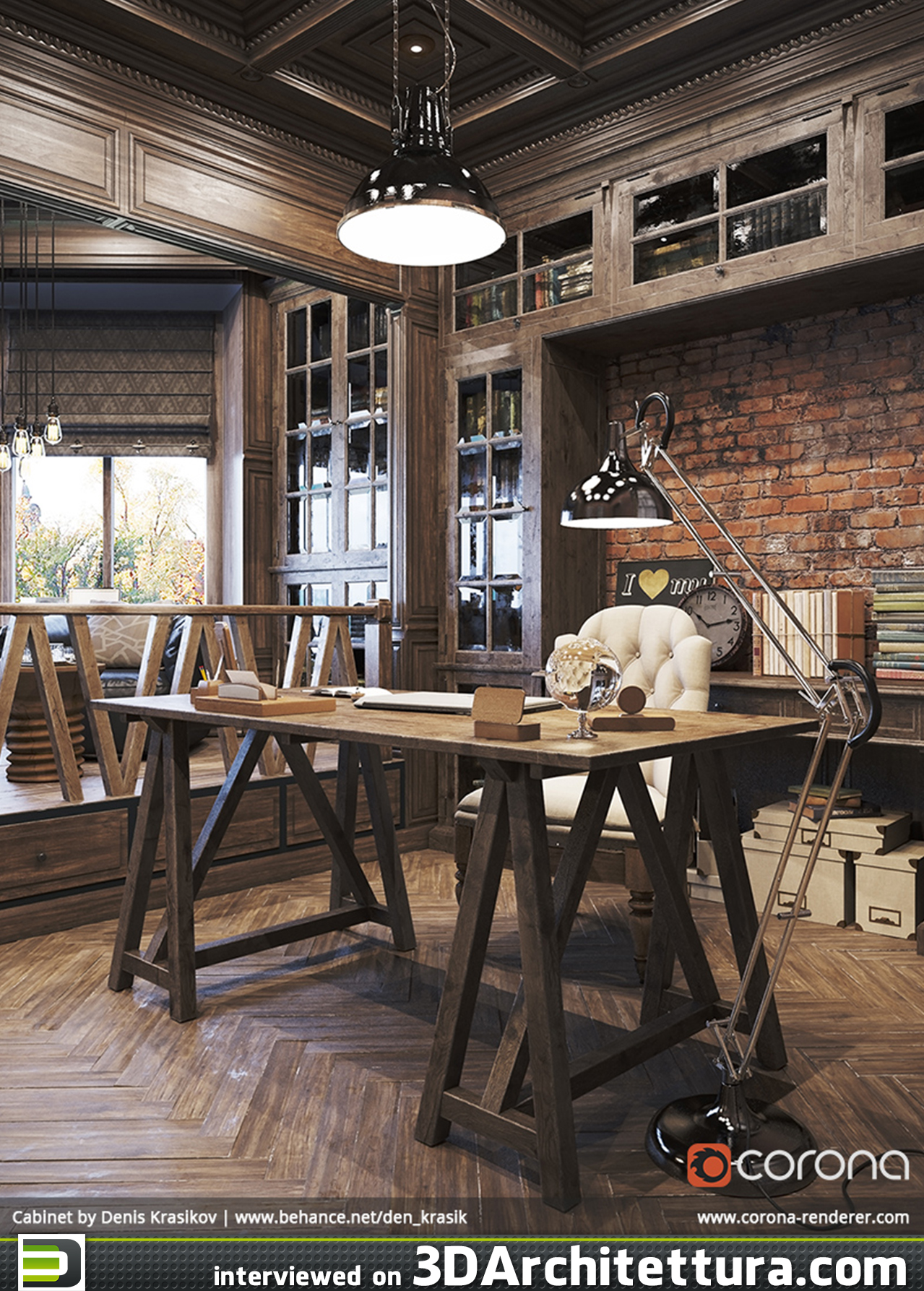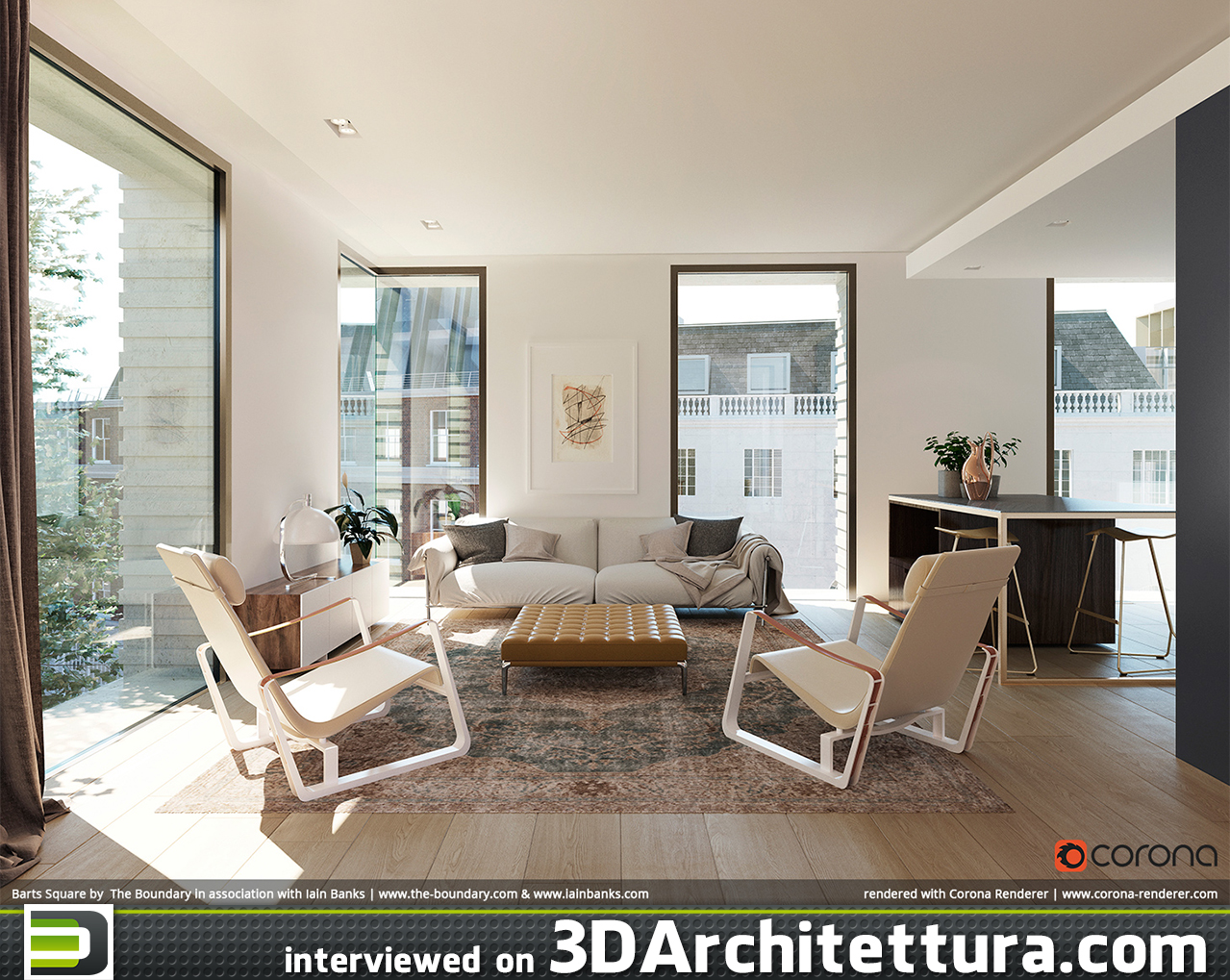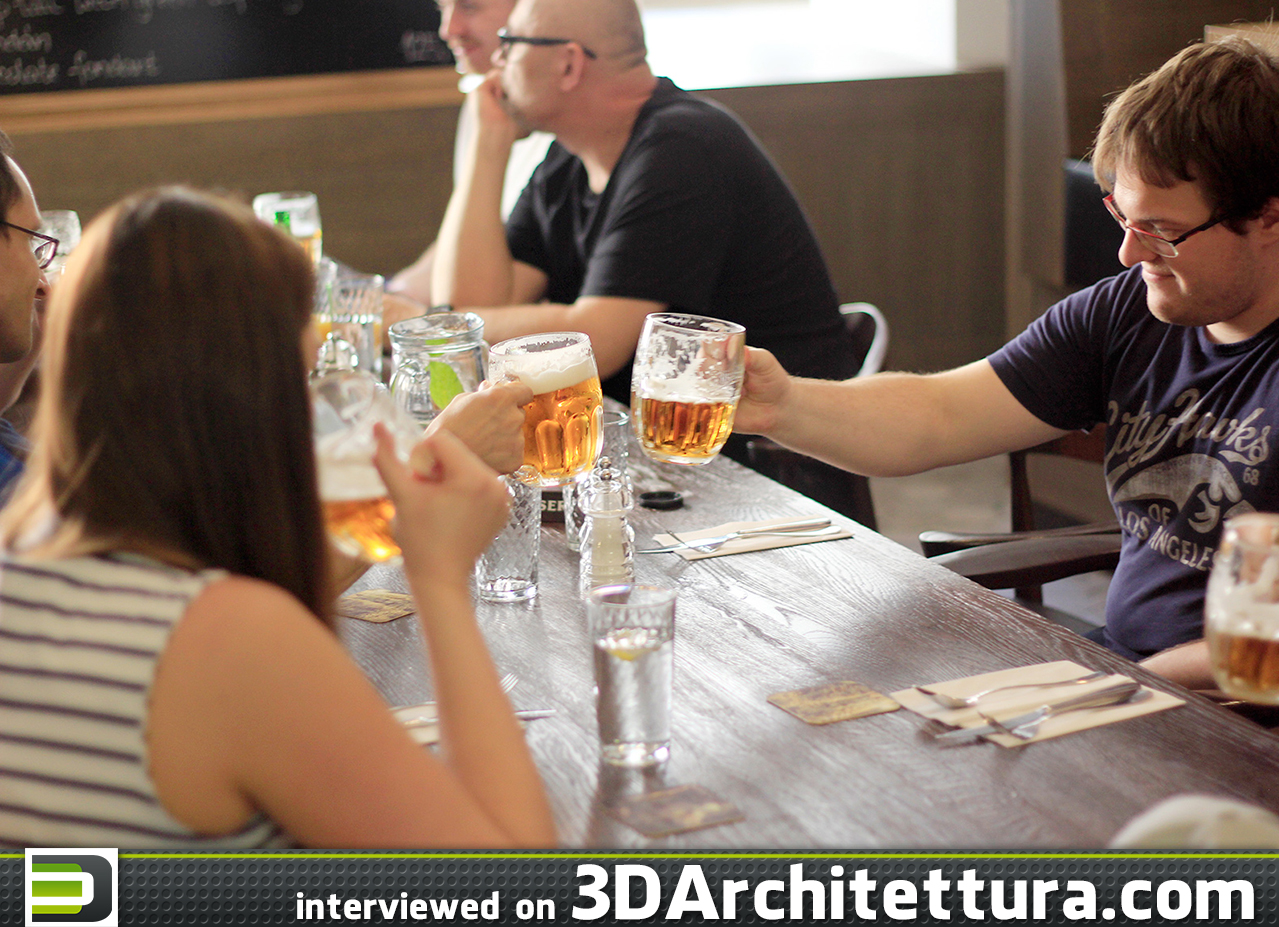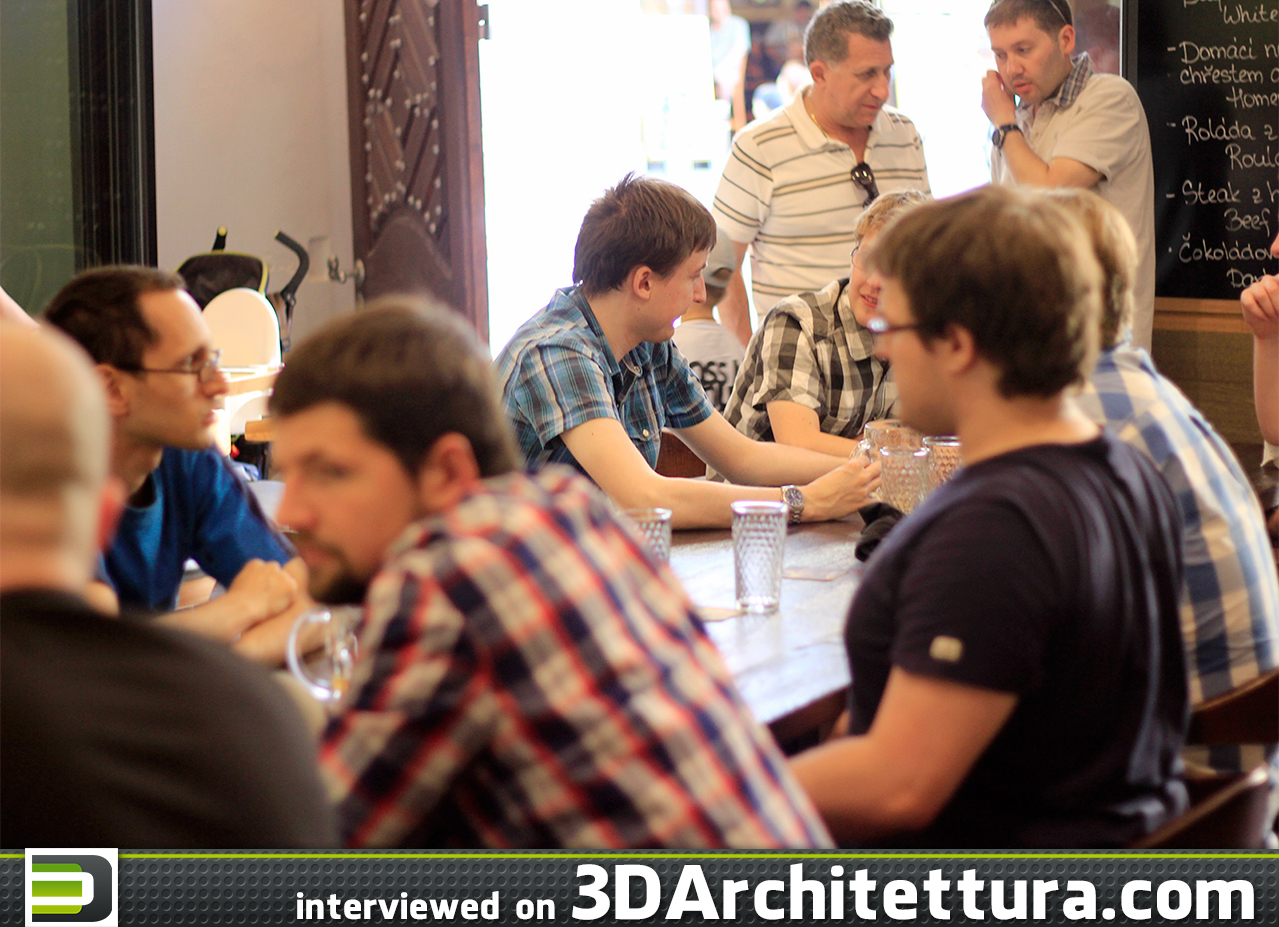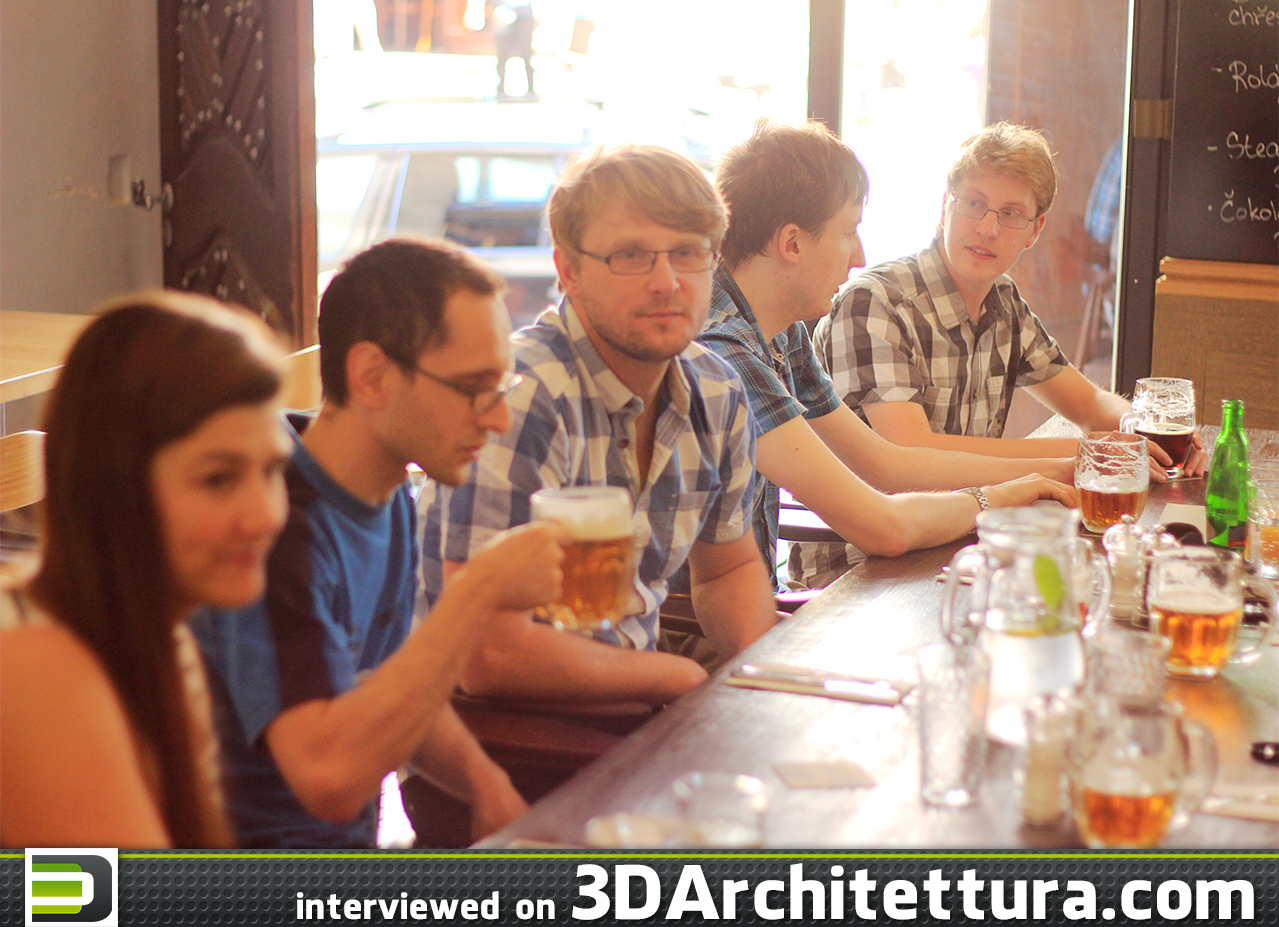All secrets of Corona Renderer in exclusive interview with the founders – meet Ondřej Karlík, Adam Hotový and Jaroslav Křivánek
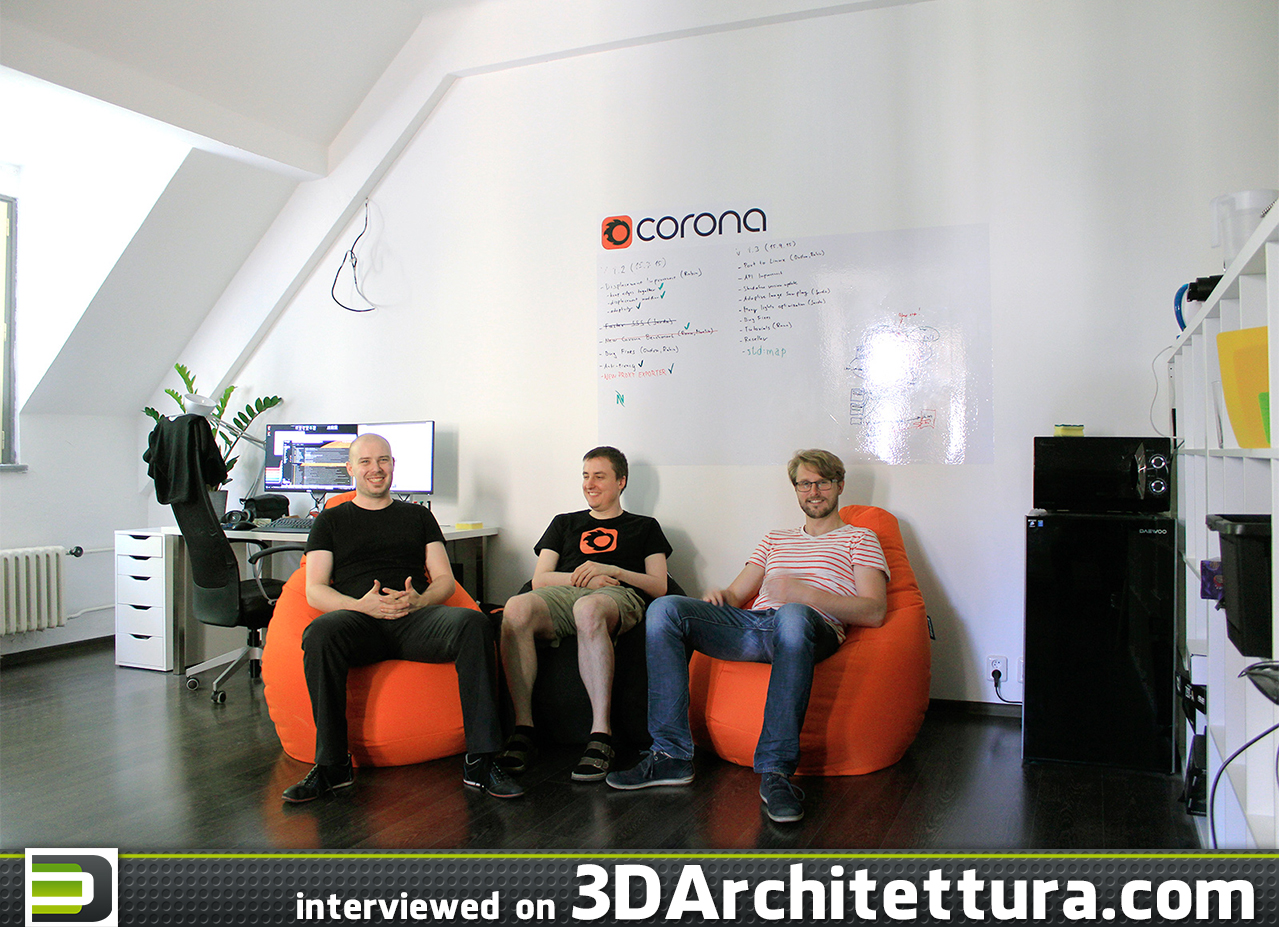
Ondra, how did it all start, how you got an idea to create a renderer?
Ondra: I was doing computer graphic as an artist long time ago. Eventually I switched over to programming when I realized I was lacking the necessary artistic talent. Then one day I had to pick a topic for my thesis. A friend suggested a renderer, and I realized I could combine both my hobbies in a single project.
You all have different backgrounds, what from your point of view was wrong with the existing render engines, when you just started? What you wanted to improve/offer with Corona?
Adam: I used to work as architectural visualizer for almost a decade and during my time as an artist I had the opportunity to work with many render engines. Each of them had its “special” set of features, characteristics and approach towards getting the desired results. It was clearly visible that every render engine was developed with certain mindset and that the developer kind of unintentionally forced his perception of who will be the end user and what knowledge she or he will have (photography, physics …).
Our approach is different. We are working on a renderer which is powerful and yet easy to use, flexible enough to let you create realistic and believable output in reasonably fast timeframe. One of the tasks in this process is the elimination of the unnecessary buttons, sliders and knobs which just affect the settings of the rendering algorithms. Corona Renderer is free of unnecessary sampling constants and other clutter that would prevent the artist from working efficiently. With only a few exceptions, we only keep settings that give the user an artistic control over the final result. So the artist can spend less time setting things up and more time actually creating his or her art.
How did you decide to join the project and bring it together to the new level? Did you feel it as a risky decision?
Adam: I have known Ondrej for a very long time from a Czech 3ds Max discussion forum and I have followed his work while he was a 3d artist back in the day. One day he had started posting the results of his school project – a renderer called K-Ray. I have been observing it since the beginning with a lot scepticism and every time I have decided to test it out, it simply crashed (laughing). Then back in 2012 the renderer matured and I started to see a true potential in it as it was fast and easy to understand. In summer 2013, after I moved back to the Czech Republic, Ondrej asked me to help him with setting up a company and bringing the render to the market while letting me offload some of “the wisdom” from architectural visualisation field. It was a part time job at that time which has grown into full-time commitment during the following 6 months.

Jaroslav: When Corona matured and was about to start its life as a commercial project, Ondrej was a Ph.D. student in my research group at Charles University, where I work as an associate professor. I’ve decided to take advantage of the opportunity and help co-found the company with Ondra because I saw and still see a great potential in the exchange of ideas between the industry and the academia. I know how encouraging it is for students to be able to develop a new piece of tech and see it used in practice. It is for this reason that we are working on establishing a close tie between the Master’s and Ph.D. programs in graphics at Charles University and the development of Corona Renderer.

Why “Corona”? Can you tell a little bit about the choice of the name?
Ondra: Because all other names were taken ;). Corona was my first programming project large enough to warrant actually giving it a proper name. I started with “K-Ray” as an obvious homage to V-Ray (“K” is the first letter in both my last name and nickname). Later I discovered that there was already another K-Ray, so I had to pick a different name. I wanted a nice sounding name somehow connected to the Sun or Solar system, and Corona was the first one not taken (at least by a published renderer).
This means that Corona is named after the Sun atmosphere, even though there are many other meanings of the word. The Sun corona is also depicted in our logo.
In your development blog you write “thanks to our competitors…”, but from the start how does it feel going to the market the huge part of which is taken by such a colossus as VRay (and also there are others)? Which strategy should one choose to compete in such a situation? How can you make investors and users believe in you and your project?
Ondra: Competing developers are actually much friendlier with each other than most people think. We cooperated on presentations, went out drinking many times, and even helped each other with technical stuff such as battling the 3ds Max API.
Adam: Competition is always a good thing – it keeps you on the edge, pushes things forward as you always want to develop better product than others. We can also learn from success and failures of our competitors as well.
V-Ray, Mental Ray and Maxwell are big, mature, and powerful render engines, but each of them is aiming to slightly different user than the one which we want to acquire. We are quite confident, that there are a lot of users who would like to trade the hustle of setting up render engine for a much simpler approach which will lead them to the same or better results and let them focus on their art. This way we can acquire users from all of these existing render engines. Also our pricing strategy can accommodate almost everyone’s budget. We will be developing our pricing and licensing strategy a bit more in upcoming months.
And the recipe for users to believe in our project? I think that they should simply download the demo of Corona Renderer and see for themselves.
Ondra: From the very beginning we bet all on a single card: if you make a good and affordable product, people will use it and buy it. So until recently, we invested close to zero effort into marketing, and focused all our energy into making Corona as good as possible. And I am very glad that this approach is paying off.
Now there is a trend to use real time video game technologies for architectural visualization. We see nice walk-throughs done with Unreal Engine, for example, that also became free this year. What do you think about realtime rendering? Do you plan to do something in this direction?
Ondra: The demos we have all seen recently are indeed mind-blowing, but frankly, I hope this approach will not stick. For me it feels like a technological step back – we are going back from the scalable, powerful, and exact ray tracing into the world of fakes, guesswork, and more manual work for user (such as unwrapping and pre-computation steps). What I am hoping is that the ray tracing-based rendering will eventually allow you to do the same walk-throughs, without so many tricks required.
And yes, allowing interactive walkthroughs in Corona has been on my TODO for a long time.
Adam, do you still have time for your own CG artwork? Did the development of the renderer change your perspective, your point of view as a CG artist?
Adam: I did have a time in the beginning while I was working on the Corona Renderer part time, but things has changed and recently, I haven’t had much time to do almost any personal stuff. I do carry some ideas in my head for my personal works, but who knows when I will have a bit of time to actually digitize them. My perspective on software development changed a lot, since I have started as 3d artist. The change was gradual and it did not happen overnight. I have realized that the whole process of creating software or adding just one feature is not as easy and quick task as you would think. Great deal of work is not only finding the solution for the problems, but finding “the right way” of implementing them. Corona Renderer has got many users, with different workflows and backgrounds and every user has got his “right solution” of how the feature should be implemented/designed.
Now when your company is growing, how you manage/structure the work processes? Do you fully delegate responsibilities to your employees or you tend to “dictatorship” model and total control on all the development moments? How your find the balance? Are you a “family-type” “having fun together” company or a serious “cold” corporation?
Adam: Our company is divided between two offices 260km apart from each other. In Prague we have the bigger portion of our team – all the developers are concentrated there, while a smaller office located in Prostejov takes care of business, sales, accounting and administration. I am in charge of the company from legal and business point of view, Ondrej is in charge of the development teams and Jaroslav is responsible for research and talent acquisition. Dream team :)
We are still learning the proper ways of communicating among us and also other Corona associates (we have hired few programmers and also more people taking care of scripts, support …). It is still a learning process for us – we are still quite new to all this.
Ondra: I was initially afraid of what will happen when more than 1 person will start modifying the Corona rendering core at once, but it turned out to be doable, with the right discipline and tools. And of course we have fun developing Corona – that is the whole point ;)
Jarda: The team is still small enough so we can afford that partially haphazard, family-like atmosphere. But we are quite aware of the fact that this cannot go on forever. With more products and more work-force, we will be forced to take a bit more rigid approach to project management, otherwise this could easily result in deterioration of the quality of what we do. And that is really the last thing we want.
Why are you dedicating your time to create a CG community on your web-site, with libraries and forums etc? why do you consider the communication with your users important?
Adam: As I have mentioned earlier – Corona Renderer is the render engine for the artists, designed by the artist. The communication with the end user is very important for us and that is why we want to support any action which actively embrace it – people can reach us via our forum, facebook, support portal, blog…
Ondra: We know that people need not only the renderer itself, but the ecosystem around it – tutorials, materials, models, assets, render farms, scripts, … This is often the main problem for people who want to switch. So we need to kick-start this as well.
What’s next for Corona Renderer? What we have to expect in the nearest (and also not so nearest) future?
Adam: We have recently published our Corona Renderer RoadMap for 3ds Max where you can get a glimpse on what we are working on. We have more things in motion and also in plan, but we do not want to reveal all the surprises yet. But what I can say is, that we would like to grow the number of Corona plugins (We have Maya, Cinema4D in Public and Semi-public alphas), introduce more workflow tweaks, and possibly open our “Corona Renderer Academy” project this year.
Ondra: In the long term I am hoping to focus more on speed. We of course optimize for speed even now, but new features/bugfixes always come first, because that is what our users prefer according to the feedback we get. I am hoping we will eventually support enough features in a stable product that we would be able to do more major speed improvements.
Jarda: Following up on what Ondra said, I see a great potential in transferring some cool new ideas from our research group into Corona to make it faster and we are in fact already working on it. I hope that eventually, we will be able to have a product that is powerful enough to be able to cater not only to the archviz community but also to get more users from the animation and VFX worlds.
Monthly lunch of Corona team and friends

















